I’ve long been a fan of Inuit sculpture, carved by the native inhabitants of the inhospitable Canadian Arctic. I first encountered it back in 2004, when I visited Toronto to compile an edition of the annual DK Judith Miller Collectables Price Guide. I was lucky enough to visit Waddingtons, where Duncan McLean generously shared a little of his vast knowledge with me. I was hooked and couldn’t resist bringing a piece home, which I found in an antiques centre nearby (below). By a sculptor with no track record, it was all I could afford and it made me smile – it’s like Morph being attacked by a rather lethargic baby polar bear!
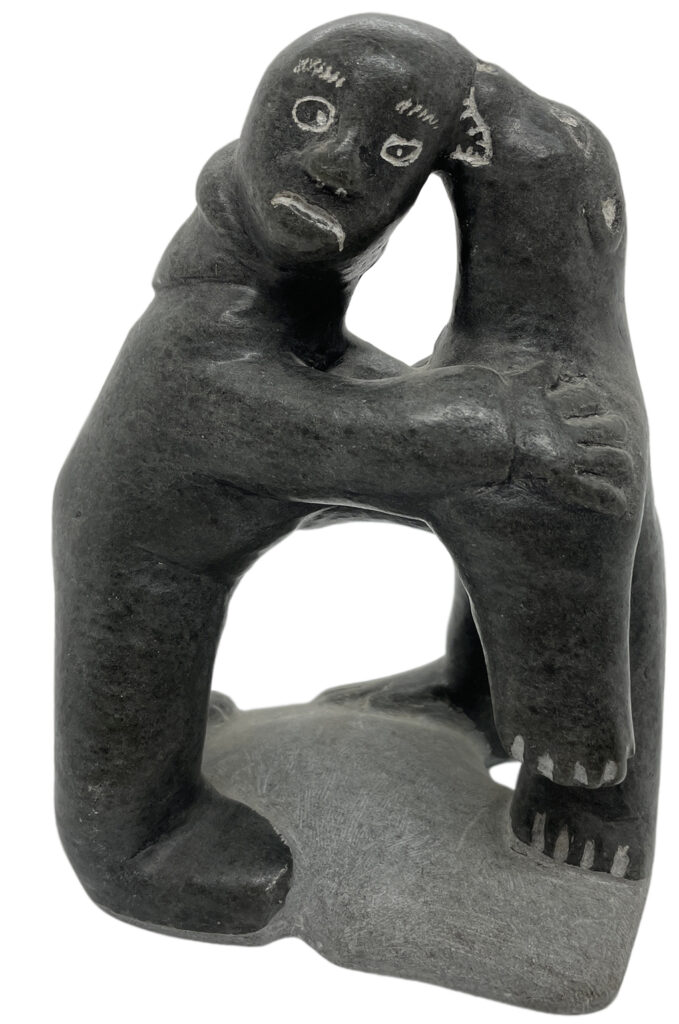
Obviously, the background of Inuit sculpture utterly fascinated me too. You can read more about that in an article I wrote by clicking here. The ‘headlines’ are that the people of the Arctic have carved tools and ‘talismans’ for the hunt for food for centuries. In the late 1940s, there was a renaissance caused by successful exhibitions of their sculpture held in New York. What was largely ‘functional’ became decorative and artistic, and a huge market in both tourist souvenirs and serious art was created, and mushroomed in subsequent decades.
What really captured my heart and mind were the more abstracted sculptures which resembled modern art, despite the Inuit originally having had no exposure to it at all. Sculptures by names such as Karoo Ashevak, John Pangnark, Andy Miki, John Tiktak and John Kavik were what I really wanted. But they were too expensive for me, ranging from a couple of hundreds of pounds to tens of thousands of pounds. So imagine my delight when, browsing eBay one chilly Sunday during Lockdown, I stumbled across this rather fearsome looking lump of rock. The seller knew what he had – a sculpture by John Kavik.
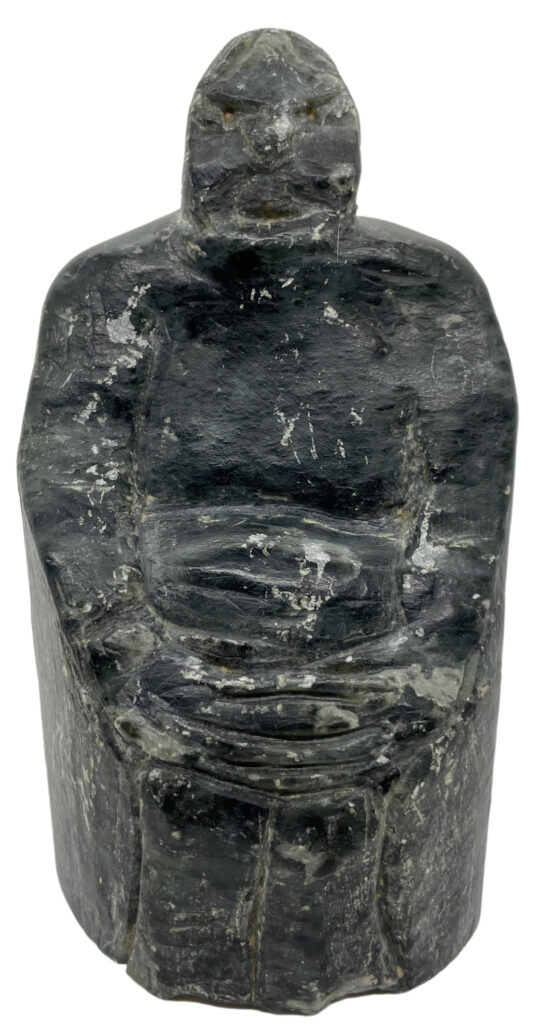
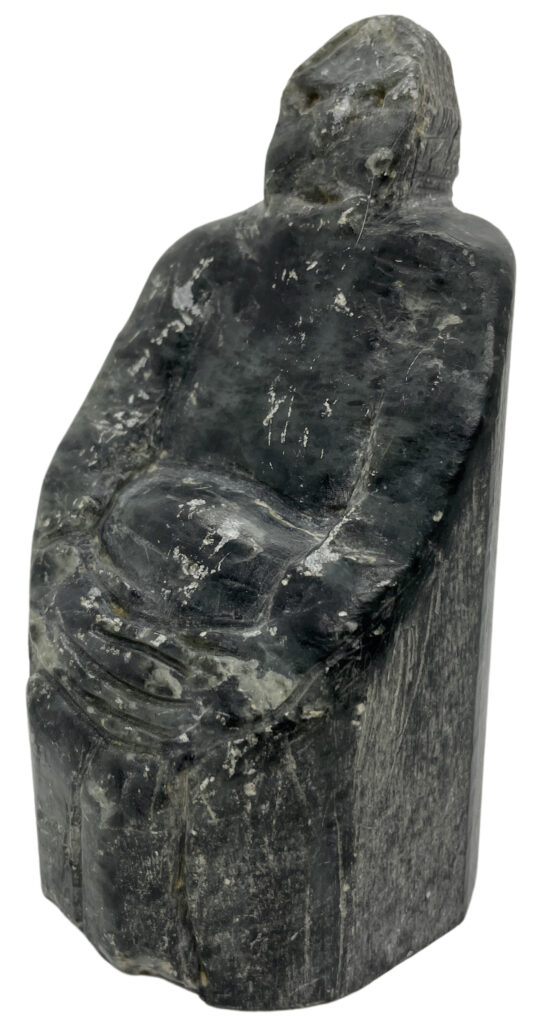
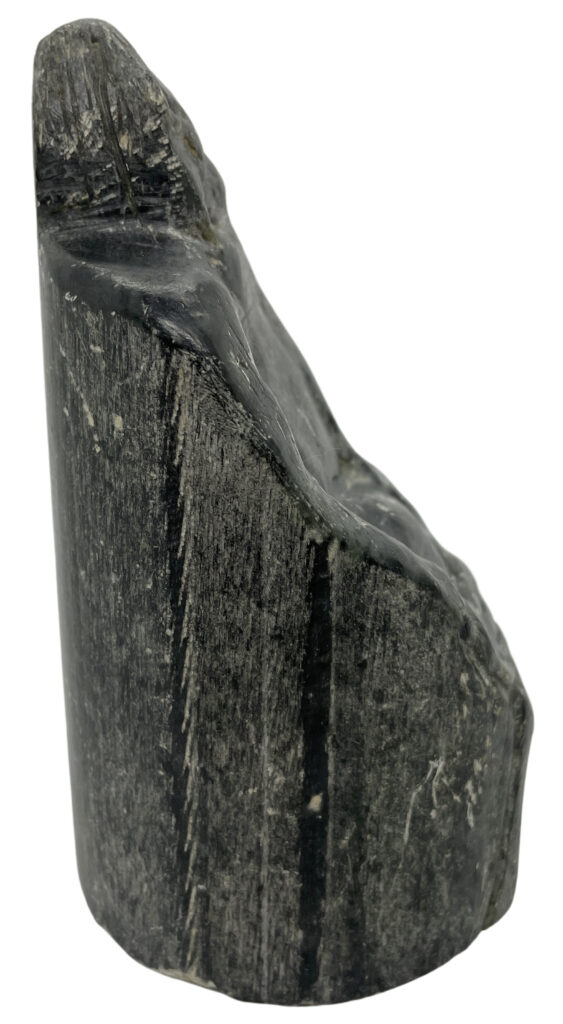

Like much of Kavik’s work, the carving could be accused of being rudimentary, or as Inuit sculpture expert Professor George Swinton describes it in his landmark book ‘Sculpture of the Inuit’, “primitive and crude“. But there’s much more to it…
John Kavik was born in 1897 and lived the transitory, itinerant life of the Inuit, struggling for survival in the desolate, freezing, snowy wastes of the Canadian Arctic. He was a talented and respected hunter for much of his life, and only came to sculpting in 1959 when he moved to a settlement in Kangiqliniq (Rankin Inlet). The settlement had grown up around a nickel mine, and Kavik’s son had begun working there so it made sense for his 62 year old father to move there. Being an ‘old man’ who had lived a hard life, Kavik never worked in the mine himself, but the access to stone and a growing demand for sculptures by the Inuit propelled him to teach himself how to sculpt. After intially selling to the non-Inuit inhabitants of the settlement, his talents were soon ‘discovered’ and his work was shown in over 50 exhibitions – some solo, some international – from the early 1960s onwards. He was fairly prolific, and carved until only a few years before his death in 1993, aged 96. Examples of his sculpture can also be found in museum and gallery collections, and even in the collection of the actor Sir Patrick Stewart, who wrote beautifully about his sculpture by Kavik, one of his favourite objects, here.
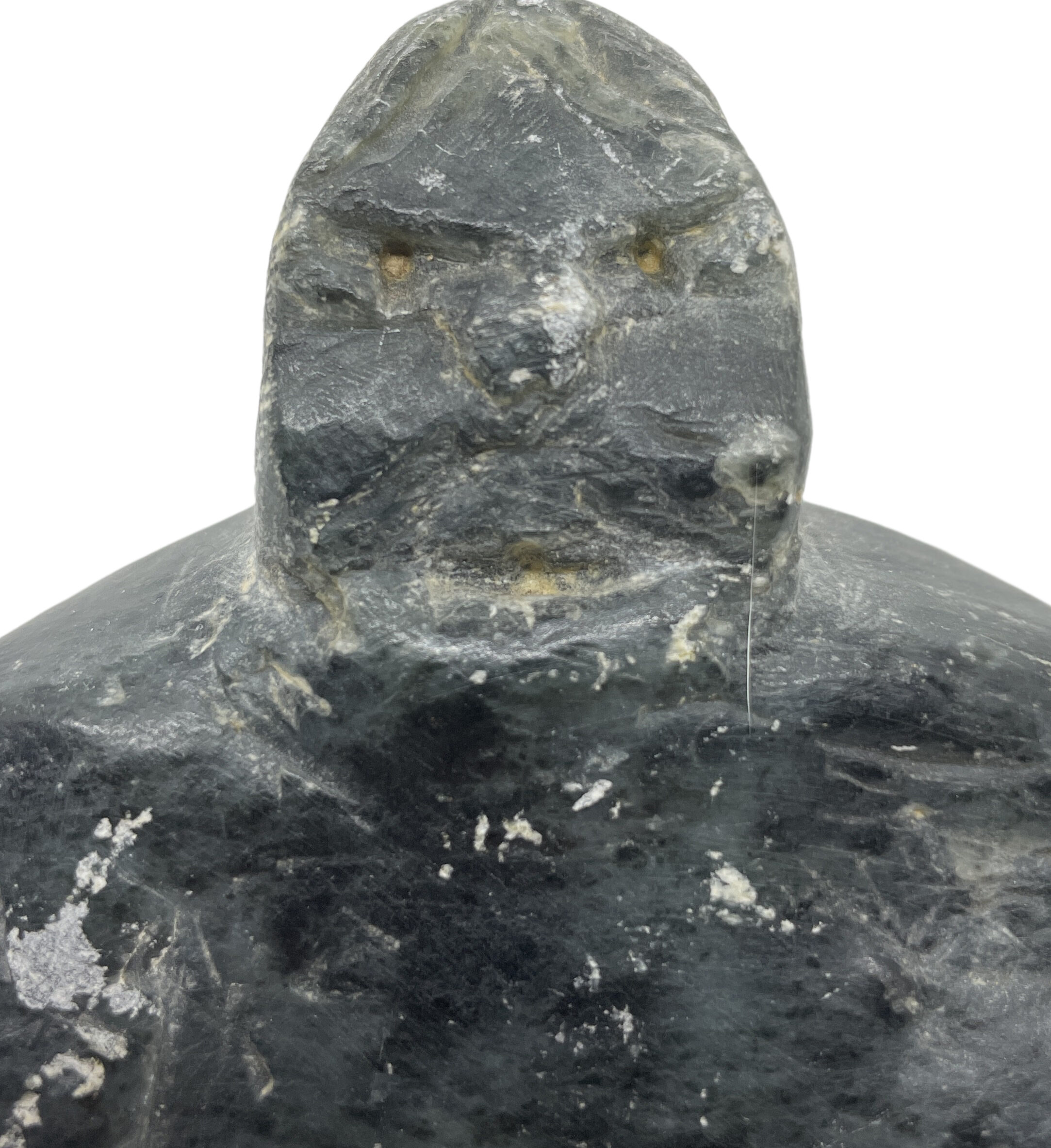
Kavik focuses on the human form, usually either standing or seated. He did not illustrate Inuit life or legends like so many artists did, but instead used his artistic imagination to express and explore the human identity in a manner that is not always or only related to his culture. Each piece is highly abstracted and stylised, and totally idiosyncratic. There’s a brutal, elemental monumentalism to many of them. To quote Professor George Swinton again:
“John Kavik is the self-taught artist par excellence. To me he also is one of the most exciting and, generally, most inconspicuous artists whose work I admired for nearly thirty years. … His knowledge, while not schooled, is profound, his manner gentle, his technique is intelligent, interesting, forceful and to the point. His major skill is the uninhibited and guileless ability to communicate visually. In this regard his technique is neither awkward nor incompetent but, in fact, is efficient and accomplished; highly sophisticated ‘pure vision’.” (Sculpture of the Inuit, McClelland & Stewart Inc, 2000, p271)
Derek Norton, Assistant Director of the Inuit Gallery of Vancouver said “John Kavik exemplifies the spirit of tundra art.” and Ingo Hessel, a leading expert on Inuit art, said “Never pretty, Kavik’s rugged works are among the most powerfully evocative in Inuit sculpture. He roughly cut and gouged the stone with saws, chisels and files, leaving many tool marks. There is no sentiment in his art, but much visceral emotion.” (Inuit Art: An Introduction, British Museum, 1999, p98)
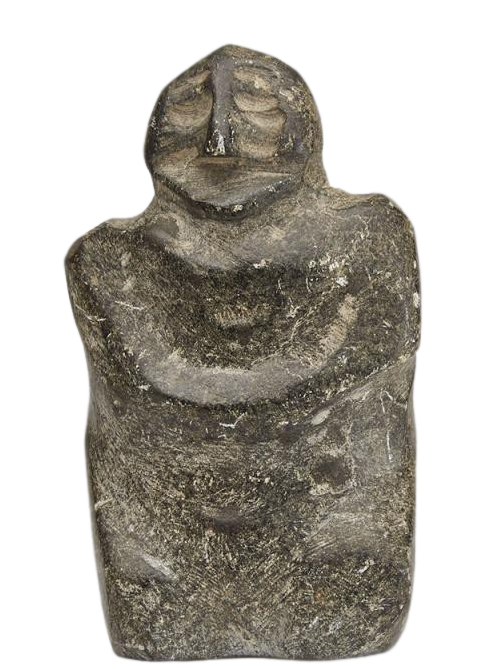
During the 1970s, Kavik’s work became less refined and more unfinished and raw. A silent, immobile solemnity was added to the monumental feel of his figures which surprisingly often only measure around three to ten inches high. And it’s this period when I think my sculpture dates from. It shows a seated woman with a belly and long-fingered hands clasped over her knees. The subject matter is unusual, I can only find one other similar piece, which is titled ‘Contemplative Woman’ (right). Away from the serious artisitic side, for those who grew up in the 1970s or 80s, as I did, mine is also somewhat reminiscent of ‘Imperious Leader’ from Battlestar Galactica!
What is typical of his style is the apparently unfinished nature of my piece – half rock and half sculpture. The prestigious Marion Scott Gallery praise “precisely this quality of directness that gives much of his later work its unique authority and force of expression.” Also typical is the handling of the mouth and eyes (above), which appear almost Prehistoric in their rendering, but yet are highly expressive. The eBay seller thought this to be an early, unfinished work, perhaps due to the machine-cut sides and back that perhaps indicate it was carved from a piece of rock cut from the nickel mine. I disagree – it fits in seemlessly with the style of his 1970s work, and the presence of inscribed lines to indicate hair at the back of the head and his signature in syllabics on the base show that it was as he intended.
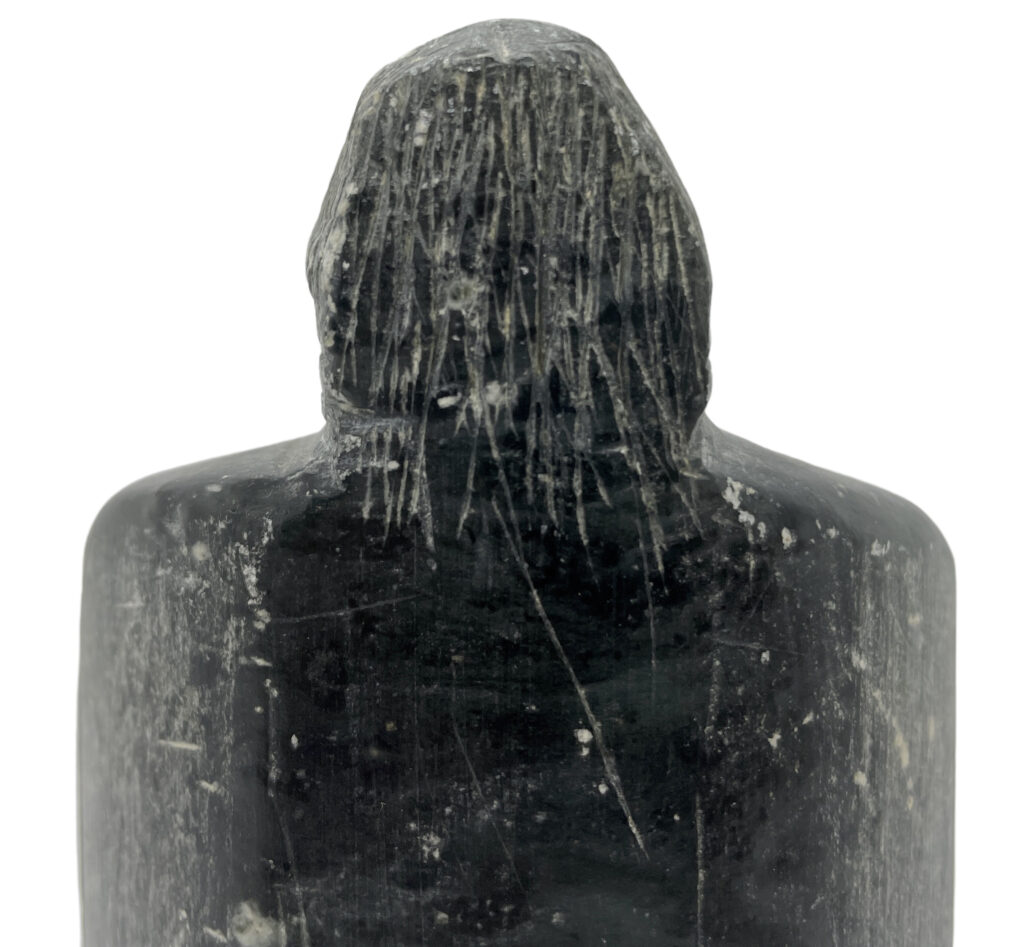
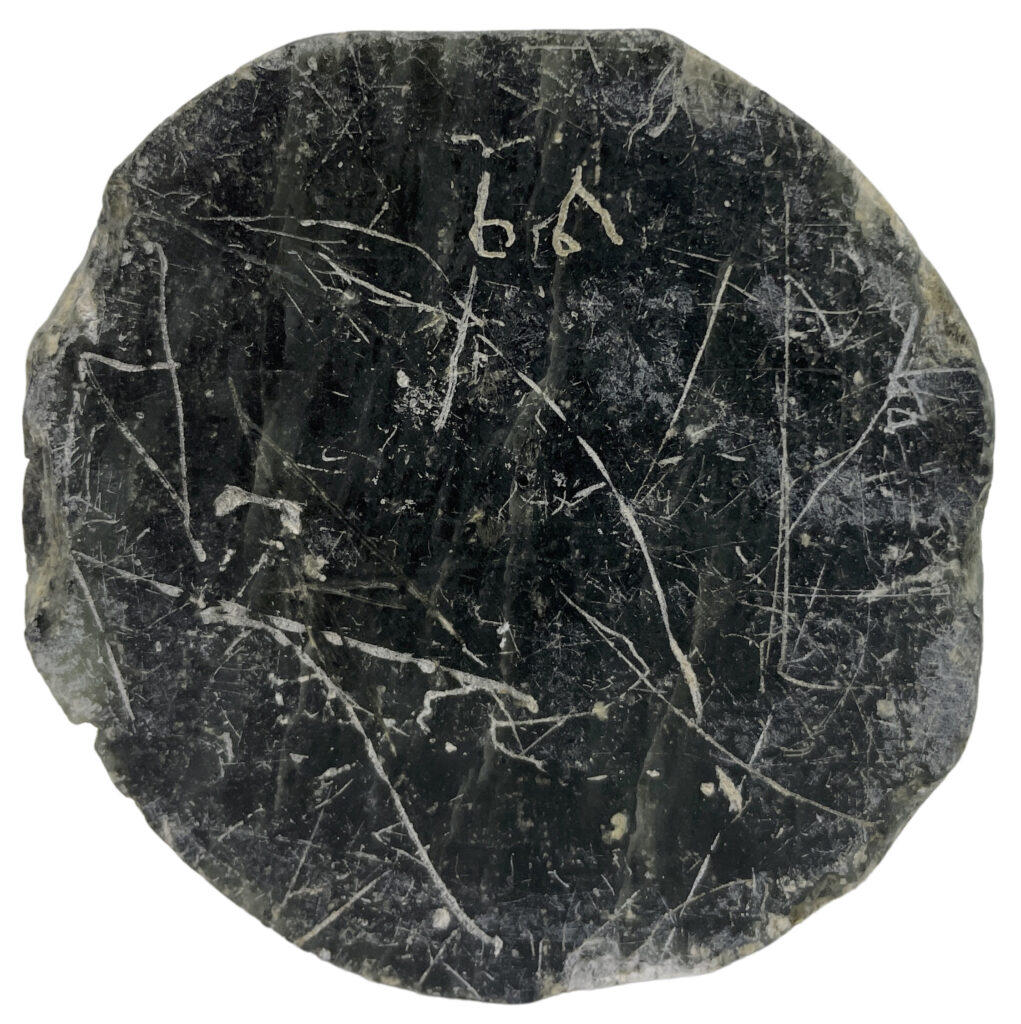
What isn’t as he intended is the level of wear and tear she’s been subjected to over the half century since he carved her. She’s been bashed about a bit and has a fair few surface scratches, probably after its original owner passed on, its origins were forgotten, and she wasn’t cared for. So off to the restorer she will go, before joining my collectionette where she will sit next to my other favourite piece…
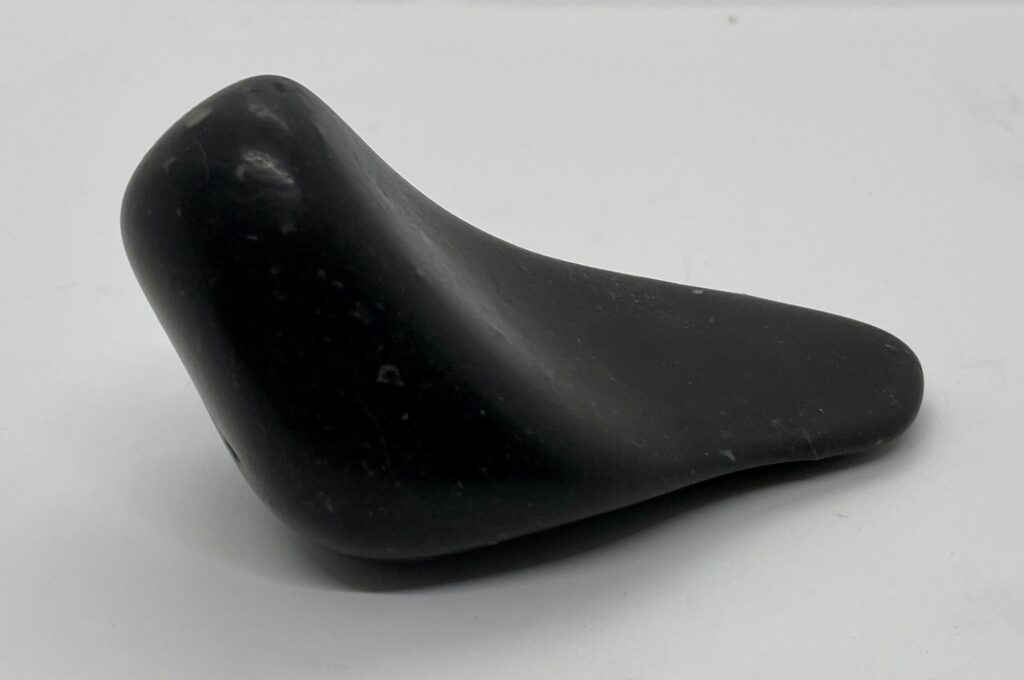
I don’t know who made this bird, as its not signed, but I bought it from a dealer who acquired it from the Earl of Mansfield’s collection of Inuit art. Part pebble, apparently smoothed by the flowing waters of a river, and part bird reduced to the absolute essentials of form, it’s wonderfully tactile. I like to think it may be by Andy Miki or Eli Tikeayak or someone, but I really don’t know. But I do know I love it, though – just as I love each piece of my tiny but growing collection of sculpture from the snowy wastes of the Arctic.
More about John Kavik
Inuit Art Foundation – profile
Marion Scott Gallery – profile
Katilvik.com – profile
Sculpture of the Inuit, by George Swinton, published by McClelland & Stewart, 1978 and later editions.

